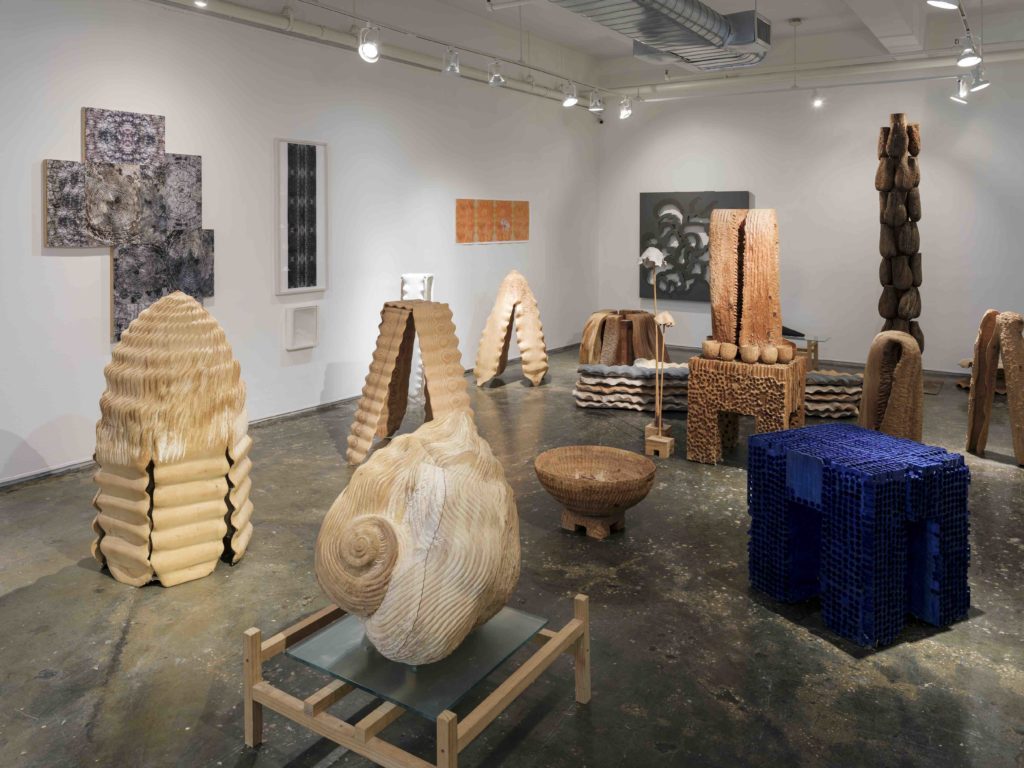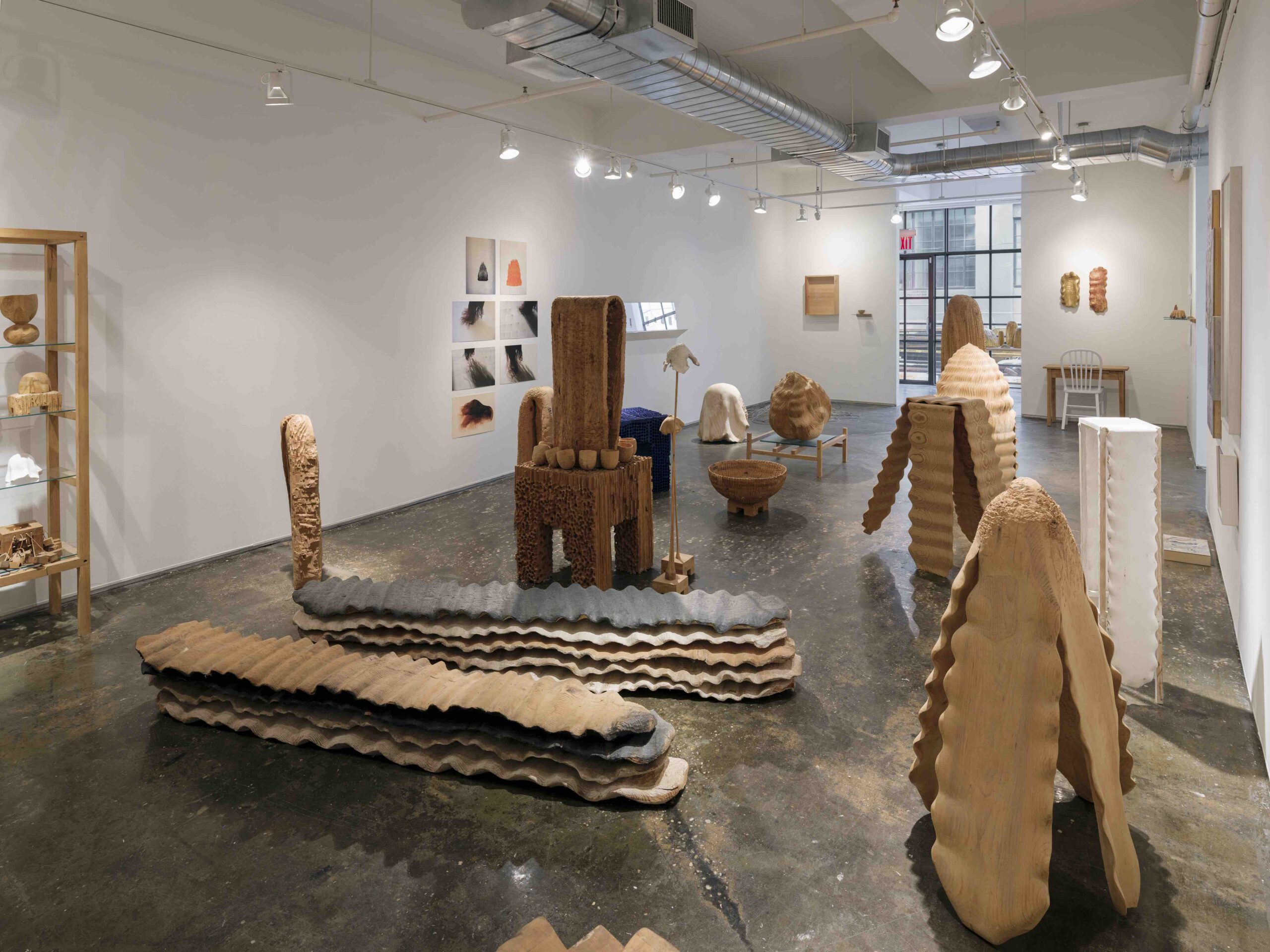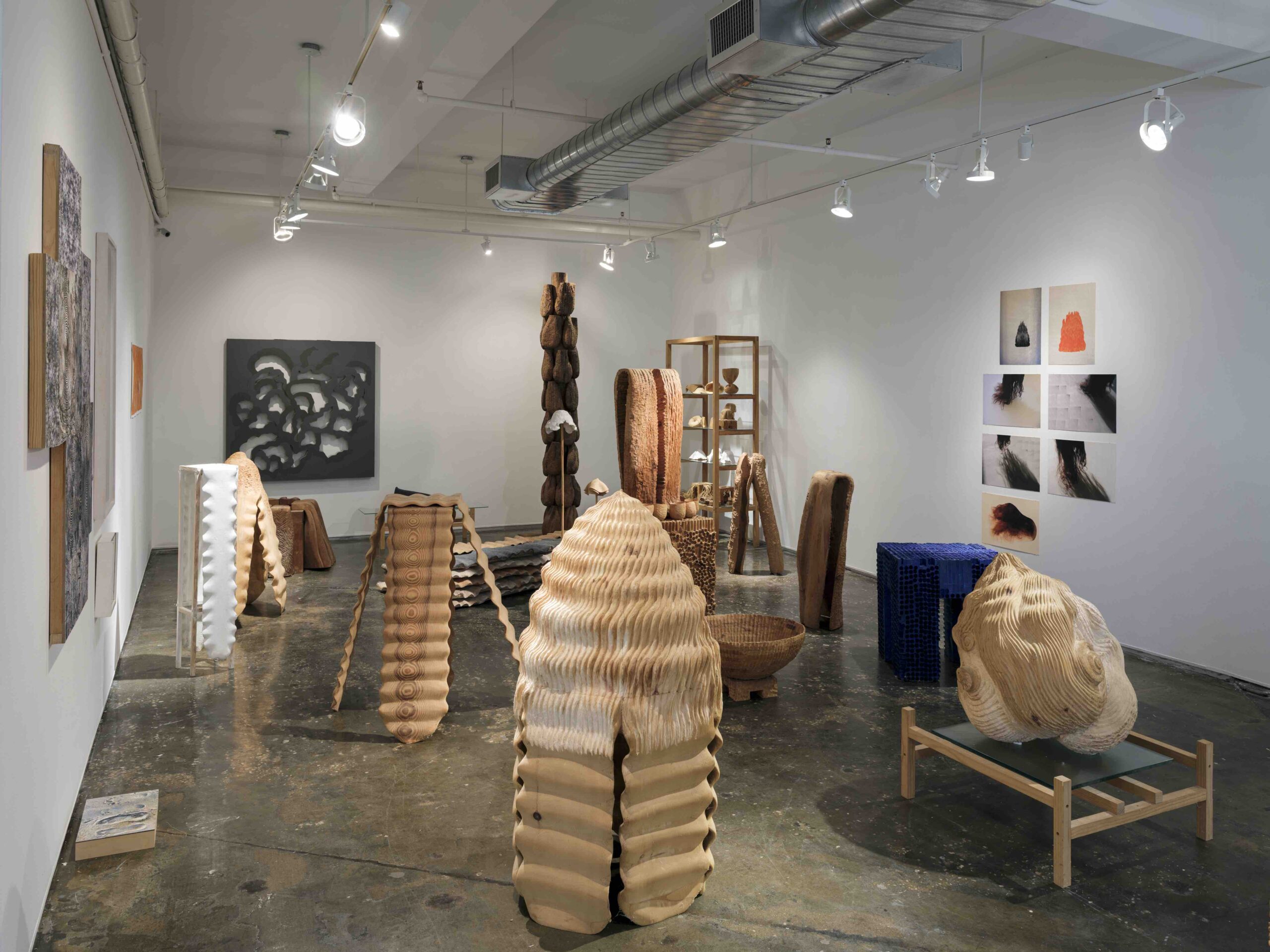
When she was 12 years old, Ann Pachner, daughter of the colorist painter William Pachner, began whittling and carving wood—a medium that would be at the center of her artistic life for the next 50 years. “It happens very young,” she says. “You’re hard-bitten by this need to work.” Over the years, Pachner has also explored photography, performance art, and drawing. Yet she has always returned to wood sculpture, which was the primary focus of a recent A.I.R. Gallery exhibition in New York, Archeology of a Studio.
In 1960s Woodstock, New York, when she was in her early 20s, Pachner began practicing meditation, hoping to become comfortable with what she describes as “the unknowable center.” Working with wood, she felt out each piece as she went along, allowing the material guide her toward the finished work. “For me, the most important part,” she says, “is being in dialogue with this intuition.” In the 1990s, Pachner’s new interest in Kundalini yoga—a practice that seeks to tap into a divine form of female energy centered at the base of the spine—inspired her to consider such concepts as inner fire and stillness when creating her pieces. The resulting wooden sculptures seem almost impossibly fluid, as if matter itself had been transformed. “If I were to think about what my criteria would be for judging art, it would be the vitality or the life force that’s imbued in the work,” she says.




